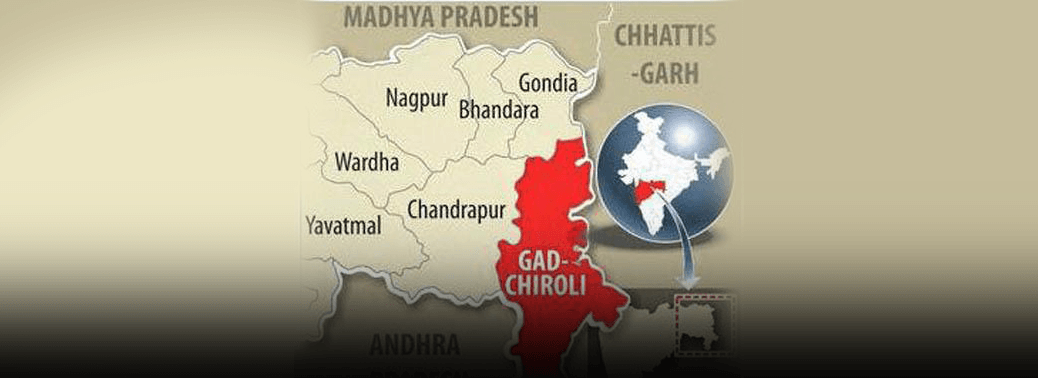GADCHIROLI NAXAL ATTACK: TROOP PULLOUT MAY HAVE LEFT A HOLE IN RED ZONE SECURITY GRID
05, May 2019

Prelims level : Defence Infrastructure
Mains level : Security Challenge
Why in News:
- The unceasing requisitioning of paramilitary forces for the elections in West Bengal may have weakened the security grid around Maharashtra’s Maoist heartland, where an IED blast killed 15 jawans
Details:
- Maoists torched 25 vehicles at a road
- construction site in Kurkheda of Gadchiroli early in the morning.
- A team of the Quick Response Team of the Gadchiroli police was on way to inspect this.
- While on road in a private vehicle, these fifteen policemen and their driver were killed by a powerful explosion set off by Maoists.
- An improvised explosive device (IED) blast was set off. The slain fighters were members of the elite C-60 wing.
- This is the fourth Maoist attack, since the national election began in April, 2019, in Gadchiroli which borders Chattisgarh.
Maoists:
- Maoists in India are anti-state rebellion groups spread in mainland country covering tribal areas of seven states. The insurgency began in 1967 in remote forests of West Bengal’s village ‘Naxalbari’. While Naxalism originated in India, Maoism in China. The common thread between the two is “armed resistance” and “violence”.
- The Maoists consider Parliamentary democracy to be tools of exploiting their rivers and natural resources by capitalists and politicians. They want to establish a ‘communist society’ through armed revolution against the government.
Measures taken to deal with Left Wing Extremism:
- In 2017, a security operations doctrine called ‘SAMADHAN’ was launched.
- The acronym SAMADHAN stands for Smart leadership, Aggressive strategy, Motivation and training, Actionable intelligence, Dashboard Based KPIs (key performance indicators) and KRAs (key result areas), Harnessing technology, Action plan for each theater, and No access to financing. The MHA suggested the use of trackers for weapons, and bio-metrics in smart guns. Unique Identification number (UID) for Gelatin sticks and explosives.
- At least one UAV or Mini UAV for each of the Central Armed Police Forces (CAPF) battalions deployed in the Maoist hotbed. Joint Task Forces for operations along inter-State boundaries to be set up. Better inter-state coordination and intelligence sharing.
- 400 fortified police stations to be set up in Naxal belt.
- Resumption of Left-Wing Extremism (LWE) – specific schemes such as SRE, SIS, IAP/ACA, CIAT schools. Prevention of Money Laundering Act (PMLA) to be reviewed to ensure effective choking of fund flow to LWE groups. Fast tracking building infrastructure, with a focus on solar lights, mobile towers with 3G connectivity, and road-rail connectivity.
- Indian Army or specialized forces – such as Greyhounds – to train forces to take on naxals.
C-60 wing:
- The C-60 was created as a batch of 60 commandos to counter Maoist violence in Gadchiroli.
- As Naxal activities heightened in the coming years, a second branch was also created in 1994. They are similar to the Greyhound forces in Telangana and the SOG (Special Operation Group) units in Andhra Pradesh.
- The contribution of C-60 has been a notable one, and they have been alternatively referred to as ‘crack commandos’. The commandos were recruited from the same regions where the Naxals enlisted their own fighters.
- Having the same roots, the C-60 had operational advantages compared to other units of the state police. These include faster maneuvering, and the greater ability to converse with the local population. The C-60 is qualified for combat in difficult battlegrounds, such as dense forests and over hilly terrain. Apart from actual combat, the C-60’s task also includes facilitating Maoists to surrender and join the mainstream.
- For this, members of the unit meet the families of Maoists to apprise them of government schemes made for ex-Maoists.
Way Forward:
- The forces should be more proactive and aggressive in owning operations, rather than being reactive. To overcome the Maoist Challenge, there needs to be a comprehensive policy and not just a military or security centric approach.






